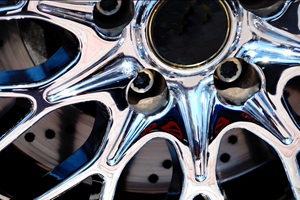Benefits of High-Resolution Detector in an X-Ray Fluorescence Analyzer
If you are wondering when to switch your XRF to a newer model with a high-resolution detector, Hitachi High-Tech Analytical Science’s Matt Kreiner has some tips.
Q: How do I know if I should switch my XRF to a newer model with a high-resolution detector?
A: Typical XRF coating analyzers are 10 years old, so it’s possible that when you last purchased an instrument there were very limited, if any, detector options. Therefore, you chose the instrument with the best performance and features that fit into your budget and sample-size requirements.
The most common detector around 10 years ago was a gas-filled proportional counter (PC) detector. In the last decade, XRF detector technology has advanced to include innovations such as solid-state or semiconductor detectors — PIN diodes and silicon drift detectors (SDD). These detectors offer additional benefits for several of today’s more advanced applications. Even if you purchased an instrument a few years ago, it’s possible your requirements have already changed or may change in the future, so it’s worth understanding when it’s time to switch to a high-resolution, solid-state detector. Here are a few key considerations:
When many elements or neighboring elements are in the sample, including alloyed plating. Examples — Cr/Ni/Cu/Zn, ZnNi/Fe. One of the key features of an SDD is improved resolution. Much like high-definition television improves your ability to see features of a moving picture, the higher the resolution of an XRF detector, the greater its ability to see more details in an XRF spectrum. With XRF, the detector is responsible for differentiating small energy differences to determine what elements are present. A PC detector has comparatively poor resolution and cannot clearly see the series of characteristic signals from neighboring elements. An example of this is when zinc is plated with copper and nickel. These elements cannot be fully resolved by a PC detector, so a combination spectral interpretation software and special hardware may be employed, sometimes resulting in sequential analysis. With an SDD, these elements are seen clearly and simultaneously. Measurements can be taken in less time and with improved accuracy.
When coatings are thin (for example, less than 10 microinch). Example — Au/Ni/Cu. Due to the design of solid-state detectors, the background noise is markedly lower than on a PC detector, making it easier to resolve the signal from the elements to be measured from unwanted signal. While this doesn’t have a significant impact when measuring thick coatings, it can be critical when measuring very thin coatings (less than 10 microinch). At that range, variations in background can be the difference between a good analysis and a nondetect reading. Solid-state detectors have very stable and low background noise, resulting in good sensitivity to detect and analyze thin coatings.
When you need to measure phosphorus content in electroless nickel plating and conversion coatings. Example — NiP/Al, ZnP/Fe. Elements with atomic numbers less than 17 (chlorine) present some challenges for XRF coatings instruments. These elements do not travel well through the air and, by the time they travel from the sample surface to the detector, they have lost much of their signal, making them harder to analyze than their more energetic counterparts. The combined sensitivity, resolution and background of a solid-state detector makes it possible to directly detect and quantify phosphorus, even for thin layers of low-phosphorus electroless nickel.
Detector choice can be a complicated subject, and there are many applications where a PC detector performs very well and may be preferable to a PIN diode or SDD. It’s important to choose the right XRF equipment supplier who will consult with you and determine the best technology for your business needs.
Matt Kreiner is the Product Manager for Hitachi High-Tech Analytical Science’s coatings analysis products. Visit hha.hitachi-hightech.com.
Related Content
A Chromium Plating Overview
An overview of decorative and hard chromium electroplating processes.
Read MoreGlass Bead Blasting as Plating Pretreatment
What are the best practices for using blasting in preparation for plating? Angelo Magrone of Bales Metal Surface Solutions discusses the ins and outs of glass bead blasting.
Read MoreNickel Electroplating
Applications, plating solutions, brighteners, good operating practices and troubleshooting.
Read MoreChoosing and Troubleshooting Copper Electroplating Processes
Learn more on this inexpensive and highly efficient process.
Read MoreRead Next
Powder Coating 4.0: Smarter, Faster, More Efficient and Connected
New tools reduce cost and waste, lower manufacturing footprint of powder coating operations.
Read MoreEpisode 42: An Interview with Robin Deal, Hubbard-Hall
Hubbard-Hall wastewater treatment specialist Robin Deal discusses the latest trends in wastewater management.
Read MoreThe 2024 Ford Mustang: All the Colors Available
Although Chevrolet has announced the end of the Camaro and Dodge is offering “Last Call” editions of the Charger and Challenger, the Ford Mustang is launching to its seventh generation.
Read More

























